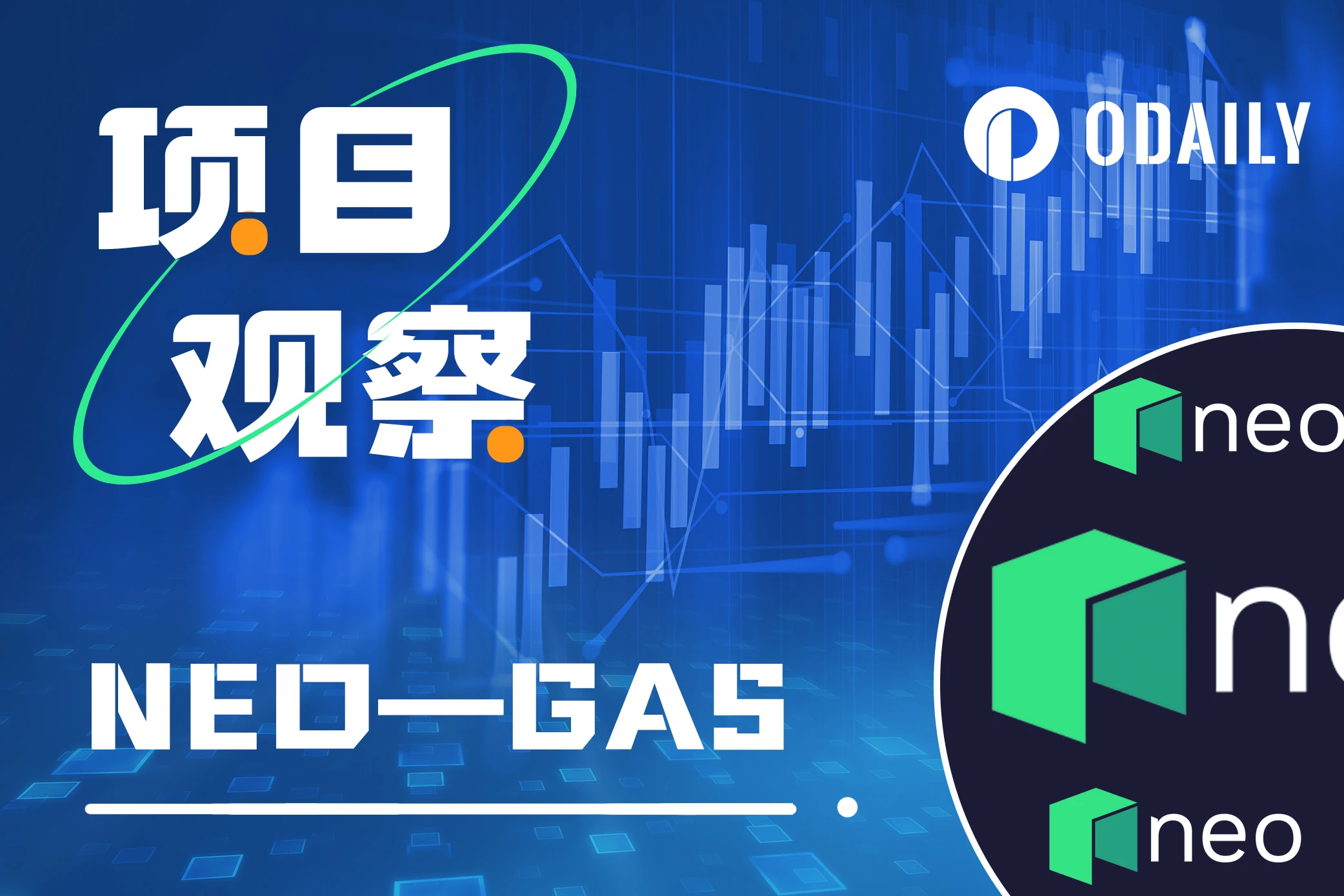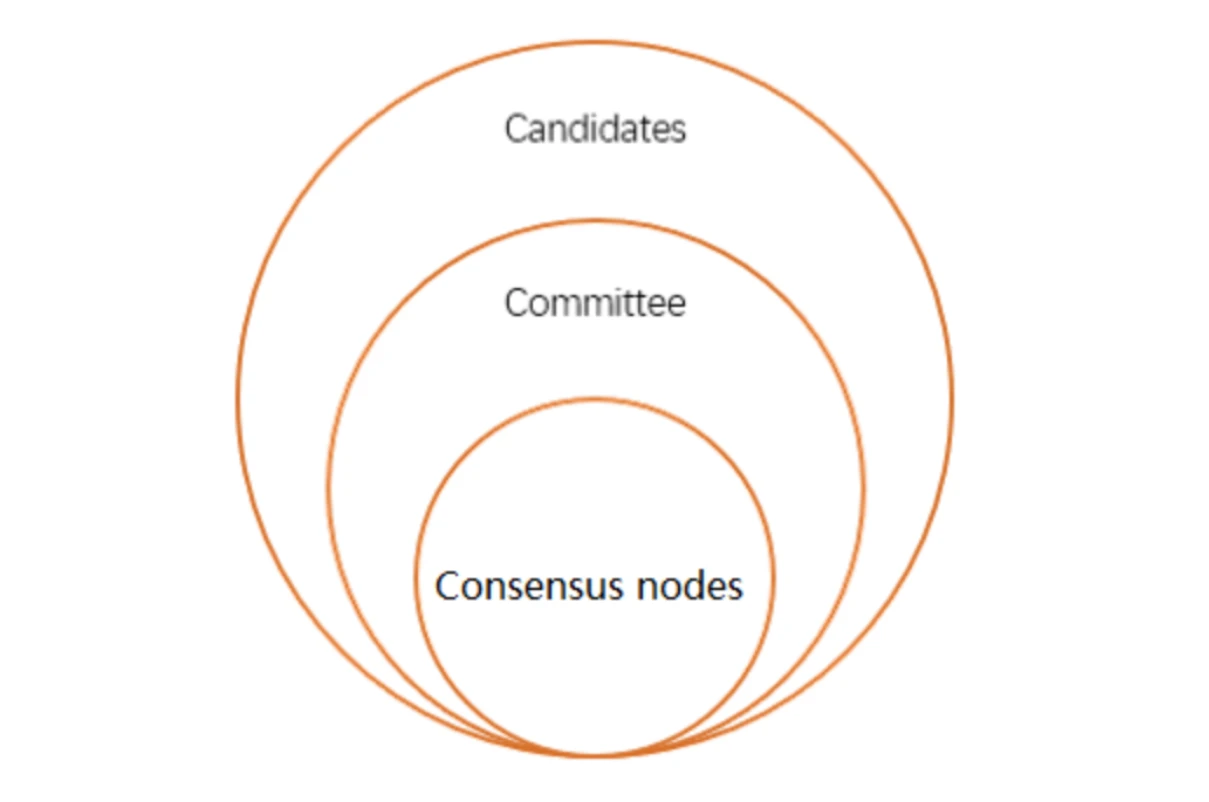Original - Odaily
Author-husband how
Editor - Qin Xiaofeng

Recently, the crazy rise of GAS tokens has caused widespread discussion in the crypto community.
In the past week, the price of the GAS token soared from 2.3 USDT to a maximum of 8.8 USDT. It is currently at 8.3 USDT, with a maximum increase of nearly 3 times. Although BTC has experienced a slight correction in the past two days, GAS has emerged from an independent market and has steadily risen.
Speaking of GAS tokens, we cannot avoid the public chain behind it - Neo. The Neo public chain was co-founded by Da Hongfei and Zhang Zhengwen in 2014. It was called Xiaoyi in the early days and was later renamed Neo in 2017. It has been developing to this day and was once known as the Chinese Ethereum.
At a time when smart contracts were prevalent, Neo was highly sought after by the industry for its unique dual-token mechanism. Although the new governance mechanism has effectively added new vitality to the public chain after the Neo N3 migration in 2021, the development of its own ecosystem is still relatively slow.
The short-term rise is just a symptom, and the degree of ecological prosperity is the moat of the public chain. The recent surge in GAS tokens is closely related to the underlying mechanism of the Neo public chain and recent actions.Odaily will start from these two aspects to explore the logic behind the rise of GAS tokens.
1. Neo N3 mechanism injects vitality into governance
A notable feature of the Neo public chain is the dual-token economic mechanism:
● NEO tokens are used as governance tokens, with a total supply of 100 million, 50% allocated to early investors, and 50% used as Neo public chain development funds. When NEO tokens are used as governance votes, the minimum unit of NEO tokens is 1. NEO holders can participate in Neo network management, including consensus node voting, network parameter modification, etc.
● GAS, as a fuel token, is responsible for the operation of the public chain. The total amount is unlimited, but there is a destruction mechanism. The current circulating supply is approximately 10.12 million, and each block produces 5 GAS tokens.
The distribution plan for GAS tokens in the early days was relatively simple, that is, NEO holders evenly distributed the GAS tokens produced by the block under certain conditions (specific conditions: transferring NEO, voting).
At first glance, such a distribution plan sounds very decentralized, but this distribution method can easily cause governance slack among NEO token holders. Neo’s governance mechanism does not have “upward” incentives. In other words, I get GAS tokens just for participating, and the governance process may not matter.
In order to solve this dilemma, the Neo team will iterate in 2021 and migrate from the Neo Legacy stage to Neo N3.
The Neo N3 governance model consists of candidates, committee members, and consensus nodes. Among them, the committee is responsible for main network parameter adjustment and on-chain environment maintenance; the consensus node is responsible for packaging transactions and generating blocks. Committee members and consensus nodes are elected from a certain number of candidates with the highest number of votes. Take a look at the new governance mechanism based on the diagram below.

The role of NEO tokens remains unchanged and is the same as in the Neo Legacy phase. The GAS token distribution rules are subdivided and GAS token incentives are carried out according to different functions:
● NEO holders 10%. Similar to Neo Legacy, this portion of GAS tokens is not voluntarily distributed to NEO holders. It is calculated based on the NEO holding period and distributed to NEO holders wallets after they complete transfers or votes.
● Committee and consensus nodes 10%. Used to reward 21 committee members for their contributions to the management and governance of the Neo blockchain. Every 21 blocks (called an Epoch), the votes of committee members are recalculated and incentive shares are in turn reallocated. Additionally, the speaker will receive network fees for transactions included in the current block.
● Voters 80%. The majority of the GAS tokens generated will be used to incentivize NEO holders to vote for committee members. Only those who successfully vote for elected committee members receive this portion of the reward, which is calculated and distributed every Epoch (21 blocks). In other words, this part of the reward is divided into 28 shares (21 shares for committee members and 7 shares for consensus nodes). NEO holders who vote for the elected consensus node will receive 2/28 of this part of the reward; NEO holders who vote for the elected non-consensus node committee members will receive 1/28 of this part of the reward.
Through the above-mentioned GAS token distribution mechanism, Neo N3 turns a single governance mechanism into a strong incentive model, forming a more executive-capable governance structure, while also providing upward incentives for NEO holders who correctly participate in governance.
2. Launch compatible EVM side chains and join the EVM ecological base camp
The previous article explained the relationship between GAS and NEO from a fundamental perspective. Properly planning the output and distribution of GAS tokens is the underlying logic for Neo to attract applications. However, the subsequent development of the Neo project depends on the construction of the ecosystem and the demand scenario for GAS tokens.
Recently,Neo founder Da Hongfei announced a major initiative:Neo is creating a sidechain that is resistant to Miner Extractable Value (MEV) attacks and compatible with the Ethereum Virtual Machine (EVM). The Neo sidechain will be released by the end of 2023.
Neo sidechains leverage the advantages of Neo N3, such as the dBFT consensus mechanism developed by Neo, and NeoVM (the first non-EVM smart contract system).
At the same time, Neo sidechain provides solutions against malicious MEV attacks, including innovative functions such as transaction packaging and agency contracts. Transaction packaging allows users to encrypt transaction content and metadata, effectively hiding sensitive information from potential attackers. Proxy contracts enhance privacy by hiding user identities, disguising the true sender of transactions, and introducing anonymity to deter abuse.
The most important thing is that it is compatible with EVM, making it easier for developers accustomed to the Solidity language to migrate projects to the Neo side chain. Especially in todays public chains, Ethereum is the absolute core, and most applications are built using EVM.
This move makes the Neo ecosystem more attractive. At the same time, the entry of projects in the Neo ecosystem will consume GAS tokens to a great extent and empower GAS tokens.
3. The logic behind the skyrocketing rise of GAS tokens
The expectation of Neos future development is one of the important reasons for the recent rise of GAS tokens.
Another important reason is that the circulation of GAS tokens is low, with only 10.12 million tokens and a market value of only $84 million (ranked 298), which is relatively low. Compared with the governance token NEO, in terms of the functional mechanism of the token, the supply and demand sides of the GAS token are more prominent, while the demand side of the NEO token is not obvious enough. This is also the dilemma of most governance tokens. It cannot be empowered.
at the same time,As a functional token on the Neo public chain, GAS tokens, in addition to the fuel mechanism, the entry of ecological projects will also empower GAS tokens, thereby increasing their demand, and the supply side tends to stabilize output. Naturally, GAS tokens The coin is more likely to rise.
As a veteran project, Neo has gone through many bull and bear cycles and is still looking for a way forward. This spirit is worthy of admiration. But the future development of Neo is still unclear. The most important thing about a public chain is ecological construction. When everyone is discussing L2 and even L3, can the ecological construction measures of established public chains attract the attention of the market?
Although the rise of GAS tokens has refocused everyones attention on Neo, the short-term surge is just a mirror image, and the prosperity of the ecosystem is the driving force to maintain the rise.










